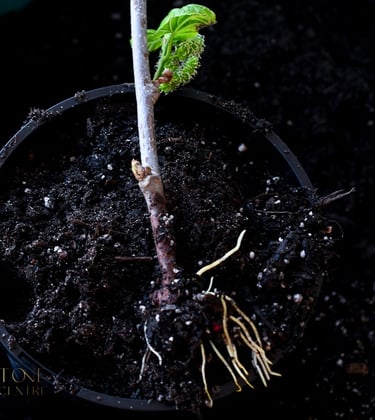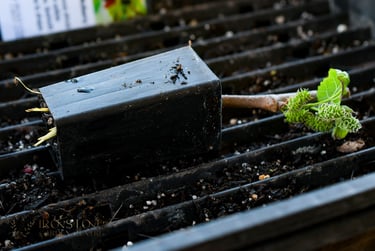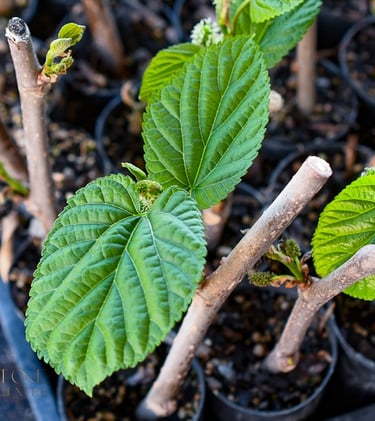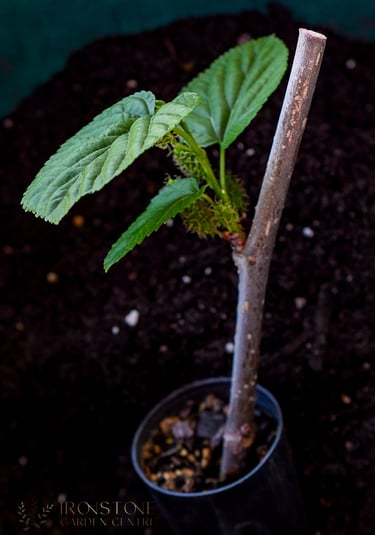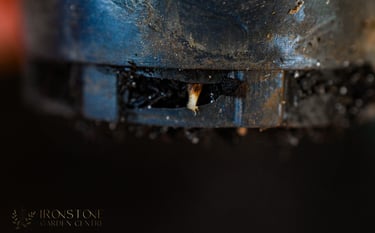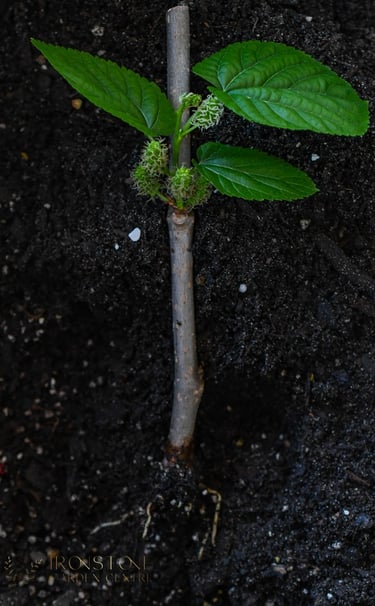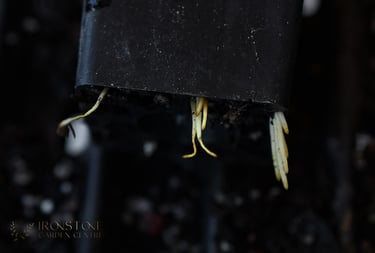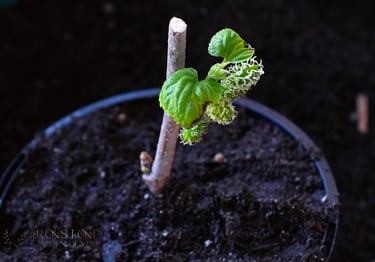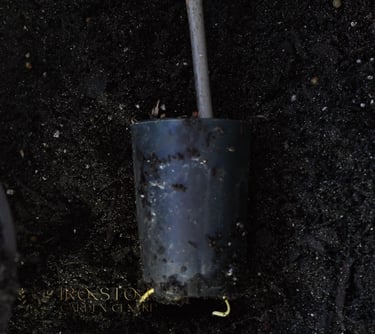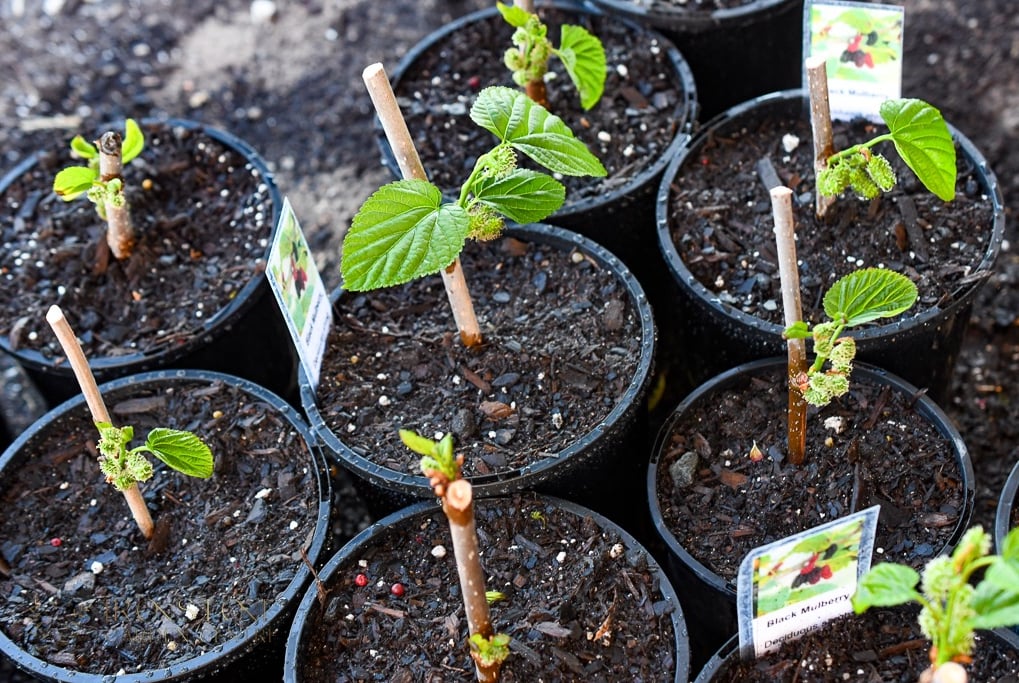Winter Mulberry Cuttings
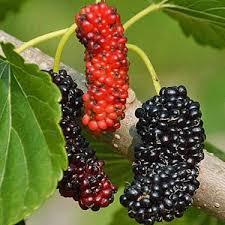

When you take a cutting from a mulberry tree, you're essentially telling the plant to start a new life. The cutting, though separated from the parent plant, still contains all the genetic information and basic building blocks it needs to grow into a new plant. Here’s how it works:
Wound Response and Callus Formation: Once a cutting is taken, the plant’s natural response is to form a protective layer of cells called a callus at the wound site. This callus helps prevent infection and is the precursor to root development. The cells near the cut start dividing rapidly, and some of these cells transform into root cells.
Hormonal Changes: The cutting undergoes significant hormonal changes once separated from the parent plant. Auxins, a type of plant hormone responsible for root development, become concentrated at the base of the cutting. This concentration of auxins, especially when combined with a rooting hormone, encourages the formation of roots, turning the cutting into a self-sustaining plant.
Node Functionality: Nodes are critical to the propagation process. They are the points on a stem where leaves and buds emerge and are rich in meristematic tissue—undifferentiated cells that can develop into various types of plant tissue, including roots. When you bury a node beneath the soil, these cells are stimulated to form new roots, which eventually anchor the plant and allow it to absorb nutrients.
One of the most intriguing aspects of propagation by cuttings is that the new plant is a genetic clone of the parent. This means it will have the same characteristics—growth habit, fruit production, and disease resistance—as the plant it was taken from. This is why starting with good stock is crucial. If you take cuttings from a healthy, productive mulberry tree, your new trees will inherit those same desirable traits. Conversely, if the parent plant is weak or prone to disease, the cuttings will likely carry those issues as well.
How to Tell If Your Cutting Is Developing Roots
The first signs that your cutting is rooting are often subtle but unmistakable to the keen observer:
1. Budding and Leaf Growth: New buds may swell and eventually sprout leaves. This is a positive sign, indicating that the cutting is beginning to establish itself.
2. Firmness in the Soil: After about four to six weeks, gently tug on the cutting. If it resists being pulled from the soil, it means roots are forming, anchoring the plant.
3. New Growth: Vigorous new growth at the tips of the cutting is another strong indicator that the roots are well-developed and capable of supporting the plant’s expansion.
When to Up-Pot
Once your cuttings have established a healthy root system and are showing signs of new growth, it’s time to up-pot them. Here’s how to know it’s time:
- Root Observation: If you see roots growing out of the drainage holes or if the cutting easily fills its current pot, it’s ready for a larger home.
- Growth Patterns: Rapid growth in the foliage, with new leaves and branches forming, is a sign that the cutting needs more space to continue developing.
When up-potting, choose a pot one size larger than the current one and use a high-quality potting mix. Handle the cutting gently to avoid damaging the delicate new roots, and water it well after transplanting.
From Cuttings to Trees: Your Path to a Bountiful Garden
Propagating mulberries from winter cuttings is more than just a gardening task—it’s a journey through the life cycle of a plant. By understanding the science behind each step, you can nurture your cuttings with confidence, knowing that you’re creating a new generation of mulberry trees that will thrive for years to come.
This October, we’ll have established black mulberry propagations available for purchase, perfect for adding a fruitful and hardy tree to your garden. Each of these trees has been carefully propagated from high-quality stock, ensuring they’ll carry the same desirable traits as their parent plant. Whether you’re starting an orchard or just adding a single tree, these mulberries are ready to take root and flourish in your garden.
Winter may seem like a time when gardens take a rest, but it’s actually the perfect season to propagate mulberries from cuttings. Understanding the science behind this process can deepen your appreciation for the wonders of plant growth and ensure your success. Winter is the season of dormancy for many deciduous trees, including mulberries. During this period, the tree’s energy is stored in the roots, with minimal growth happening above ground. Taking cuttings during dormancy means less stress on the parent plant and better chances of survival for the cuttings. The plant is in a "resting state," so when you make a cut, the cutting is less likely to dehydrate or be susceptible to disease, setting the stage for successful rooting.
